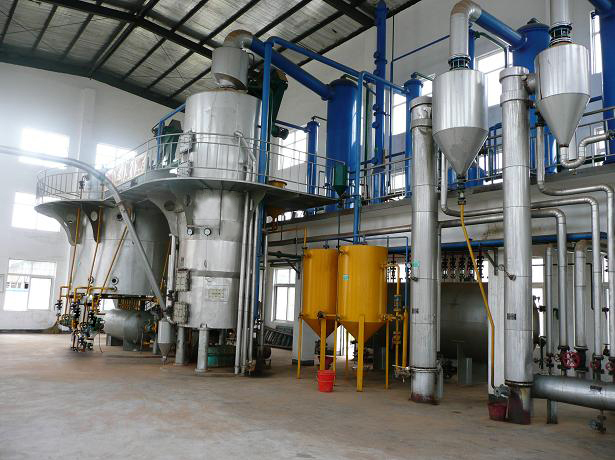A complete oil extraction production line can be divided into four parts, namely the pretreatment part, the extraction part, the oil refining and the oil filling. These four parts are generally divided into four workshops, and the equipment required for each workshop is different. Briefly introduce the following four workshops in production and the equipment that each workshop needs to purchase.

1, pretreatment workshop
The pretreatment workshop is to clean the oil crops to be processed (such as pebbles, dust attached to the surface of the oil, other impurities, moldy particles), and then the oil is dehulled, crushed, softened, rolled embryos, and steamed. Processing makes it more convenient to make oil in the subsequent pressing or leaching process.
pretreatment equipment includes screening machines, crushers, softeners, magnetic separators, vibrating screens, stone removers, rolling mills, steaming and frying pans and other pretreatment equipment. Choose the appropriate equipment according to the type of oil when purchasing.
2, leaching workshop
The leaching workshop uses leaching equipment to make oil. The solvent is fully contacted with the pretreated oil, and the grease in the oil is leached with the solvent to form a mixed oil. Then, according to the boiling point, the solvent is evaporated and recovered to separate the solvent from the grease to obtain crude oil.
3, refining workshop
The refining workshop uses oil refining equipment to refine the crude oil produced in the previous workshop to remove the fiber, phospholipids, pigments, free fatty acids, moisture, wax and other impurities in the crude oil that are harmful to the human body and affect the quality of the oil. Ensure oil quality and food safety.
Refining equipment generally includes five major processes, namely degumming, deacidification, dehydration, decolorization, deodorization and other processes. According to the different types of oils, choose whether to add dewaxing process. If you don’t know the types of oils, you can consult the oil equipment manufacturer. The difference of the oil is to recommend the appropriate process and equipment.
4, filling workshop
This part is the packaging link. After refining, qualified refined oil can be sold as its own brand oil after filling, sealing, coding, and labeling, or it can be used as a substitute for processing products. Before selling oil, it is necessary to check whether the acid value, peroxide value, moisture, aflatoxin, smell, taste, color, etc. of the oil meet the edible oil standards. The unqualified oil needs to be reprocessed and can only be sold after it is qualified.
The above is the equipment required for the leaching equipment production line. These are only approximate, and the specific equipment and process need to be communicated with the equipment manufacturer.
Copyright © Henan Zhongxing Grain And Oil Machinery Co.,Ltd. All Rights Reserved. Powered by MetInfo